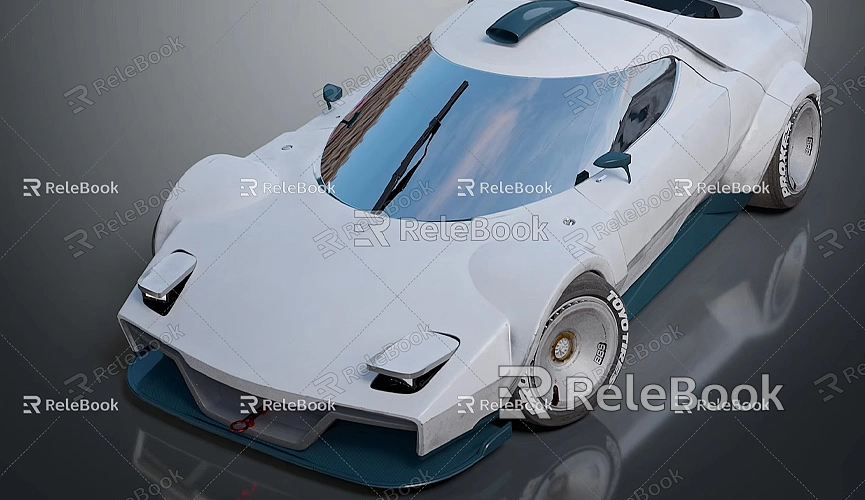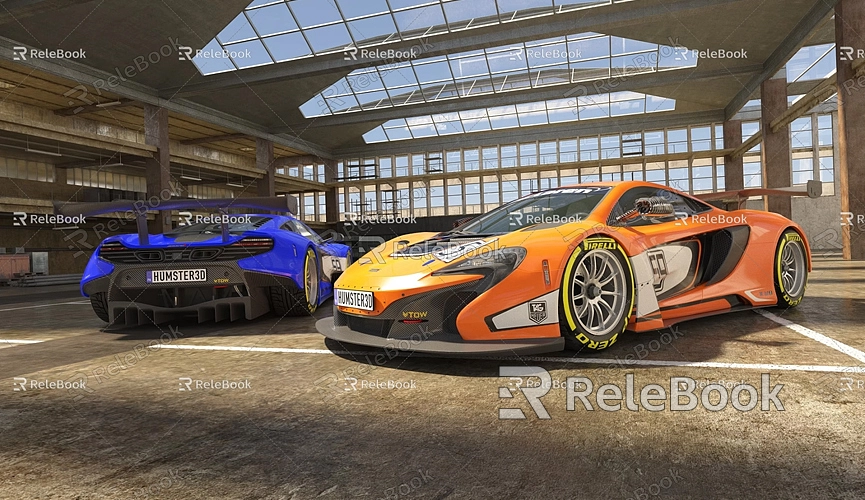How to Make a Car Model in Google SketchUp 8
Google SketchUp 8 is a versatile 3D modeling tool suitable for both beginners and professional designers. While primarily known for its applications in architecture, interior design, and industrial design, its intuitive interface and powerful features have made it a popular choice for various complex modeling tasks, including creating car models.
Though SketchUp 8 is an older version of the software, its user-friendly design and robust functionality remain appealing to many designers. Building a 3D car model is a challenging yet rewarding project for 3D modeling enthusiasts. This process tests not only your modeling skills but also your ability to replicate the proportions, shapes, and intricate details of a car. If you're planning to create a car model in SketchUp 8, this guide will walk you through the entire process, from planning and modeling to detailing and texturing.
Familiarizing Yourself with SketchUp 8 Tools

Before starting your car modeling project, it’s essential to understand the basic tools in SketchUp 8. While the interface is straightforward, mastering its core tools will significantly enhance your efficiency. The following tools are particularly useful when creating a car model:
- Select Tool: This tool is fundamental for selecting any part of the model to edit. Whether you’re working on the car body, wheels, or finer details, it ensures precise control.
- Push/Pull Tool: A signature tool of SketchUp, it allows you to extrude or recess flat surfaces into 3D shapes. It’s particularly useful for shaping the car body, tires, and other major components.
- Line Tool: This tool enables you to draw accurate outlines and define boundaries, helping you craft the car's shape and internal divisions.
- Circle Tool: Ideal for creating round features like wheels or headlights.
- Arc Tool: Many cars feature streamlined curves, and this tool helps design smooth edges for the body, windows, and other parts.
- Move Tool: This tool is essential for adjusting the position of components to ensure symmetry and proportion in your model.
Once you’ve gained proficiency with these tools, you’re ready to start creating your car model.
Planning the Car Model’s Structure
Like any complex modeling task, building a car model requires careful planning. A car’s design typically comprises several key components, including the body, wheels, windows, lights, and bumpers. Start by conceptualizing the car’s proportions and structure. Begin with a rough outline of the car’s frame, which you can refine as you progress.
To achieve realistic dimensions and proportions, consider importing reference images or blueprints into SketchUp. Place these images on a separate layer for easy comparison during the modeling process. Pay close attention to the car's measurements, including the body’s length, width, height, and the size of features like tires and windows.

Creating the Car Body
The car body is the centerpiece of your model and one of the most challenging aspects to design. Start with a simple rectangle to represent the car's base, and use the Push/Pull Tool to extrude it into the initial 3D shape. Refine the body’s edges using the Line and Arc Tools to create the car’s distinctive curves, such as the hood, roofline, and trunk.
Focus on achieving smooth and proportional lines, avoiding sharp edges that might detract from the car’s design. Once the basic outline is complete, move on to adding details like doors and windows. These features can be created by indenting or cutting into the surface using the Push/Pull Tool. Ensure proper thickness and edge detailing for a realistic look.
Designing the Wheels
Wheels are a critical component of any car model. Begin by drawing the wheel outline using the Circle Tool. Use the Push/Pull Tool to extrude it into a 3D wheel shape. For additional realism, divide the wheel into the tire and rim. Add tread patterns or grooves on the tire using the Line Tool and detail the rim with spokes, bolts, or other design elements.
Precision is key here, as the wheels significantly impact the model’s overall appearance. You can duplicate and position wheels using the Move Tool to save time while maintaining symmetry.
Adding Details and Accessories
The details make a car model truly stand out. Features like headlights, taillights, mirrors, roof racks, and logos can be added using a combination of the Line, Circle, and Push/Pull Tools. Headlights, for example, can be created by recessing or extruding circular or oval shapes. Mirrors and other small accessories can be built as separate components and then attached to the main body.
For added realism, incorporate surface details such as contour lines or decorative trims. Group these elements to keep your model organized and manageable.
Applying Textures and Materials
Once the basic model is complete, it’s time to bring it to life with textures and materials. SketchUp’s built-in material library provides a range of options, but you may want to use custom textures for a more professional look. Apply metallic finishes to the car body, rubber textures to the tires, and transparent materials to the windows.
To access high-quality textures and HDRI resources, visit [Relebook’s Texture Library](https://textures.relebook.com/). You’ll find free downloads for materials that enhance your car model’s realism. Additionally, for pre-made 3D components, check out [Relebook’s 3D Model Library](https://3dmodels.relebook.com/).
Rendering and Presentation
Rendering is the final step to showcase your car model. While SketchUp includes basic rendering features, third-party plugins like V-Ray can elevate your model with advanced lighting, shadows, and reflective surfaces. Use these tools to create a photorealistic presentation.
Once rendered, export still images or animations to highlight your design from various angles. Pay attention to lighting and camera positioning to emphasize the car's details and overall aesthetic.
Creating a car model in Google SketchUp 8 is a creative and rewarding challenge that involves designing, detailing, and refining each element of the vehicle. By mastering SketchUp’s tools and combining them with your creativity, you can produce a stunning 3D car model. Whether you’re looking to hone your skills or showcase your work, this process is an excellent opportunity to explore the possibilities of 3D modeling. Happy designing!

